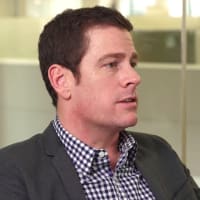Ancient Persuaders: Four types of stories that sell without sounding salesy
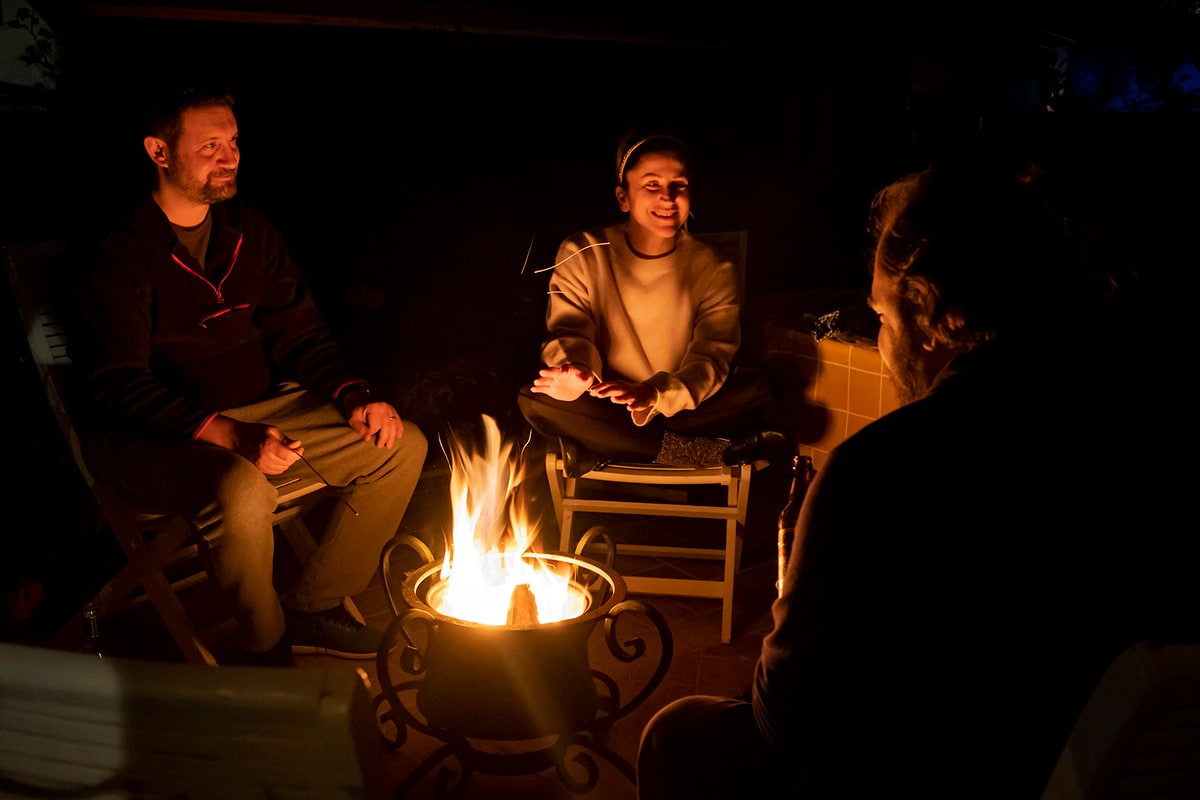
Science has shown that well-told stories are more engaging, memorable, and persuasive than many other kinds of content. Cognitive scientists say that our brains give them a “privileged” status, processing narrative in a different way. Jonathan Gottschall, author of The Storytelling Animal, puts it like this:
“When we read non-fiction, we read with our shields up. We are critical and skeptical. But when we are absorbed in a story, we drop our intellectual guard. We are moved emotionally…”
Stories have been shared around the campfire for thousands of generations. They are part of what makes us human. Great copywriters understand their power and have learned to use them in numerous ways.
This article is about stories that sell.
We want to focus on the power of different types of stories to pull readers into your world. These containers come in a wide variety of shapes to fit the need. We covered some previously, including the starving crowd and the testimonial (a special type of story about how someone used a product or service).
Here are four more types for you to consider.
Four story types copywriters use
1. Impressive-detail stories
In the early 1900s, Schlitz beer was going nowhere. They hired the legendary copywriter Claude Hopkins to do something about it. He asked to tour the brewery. On the tour he learned that they only used pure water from their own artesian well, that the bottles were sterilized twelve times, and that the “mother yeast” had been perfected over more than 1,500 iterations.
He was excited to use this information and told his client as much. They said: “What good is that? All our competitors do pretty much the same thing.”
Hopkins explained that the competitors didn’t talk about it, and he would. Within a year, Schlitz was the #1 selling beer in America. Multiple factors undoubtedly contributed to that growth, but part of the credit had to go to Hopkins, who knew the power of re-tellable facts and word images.
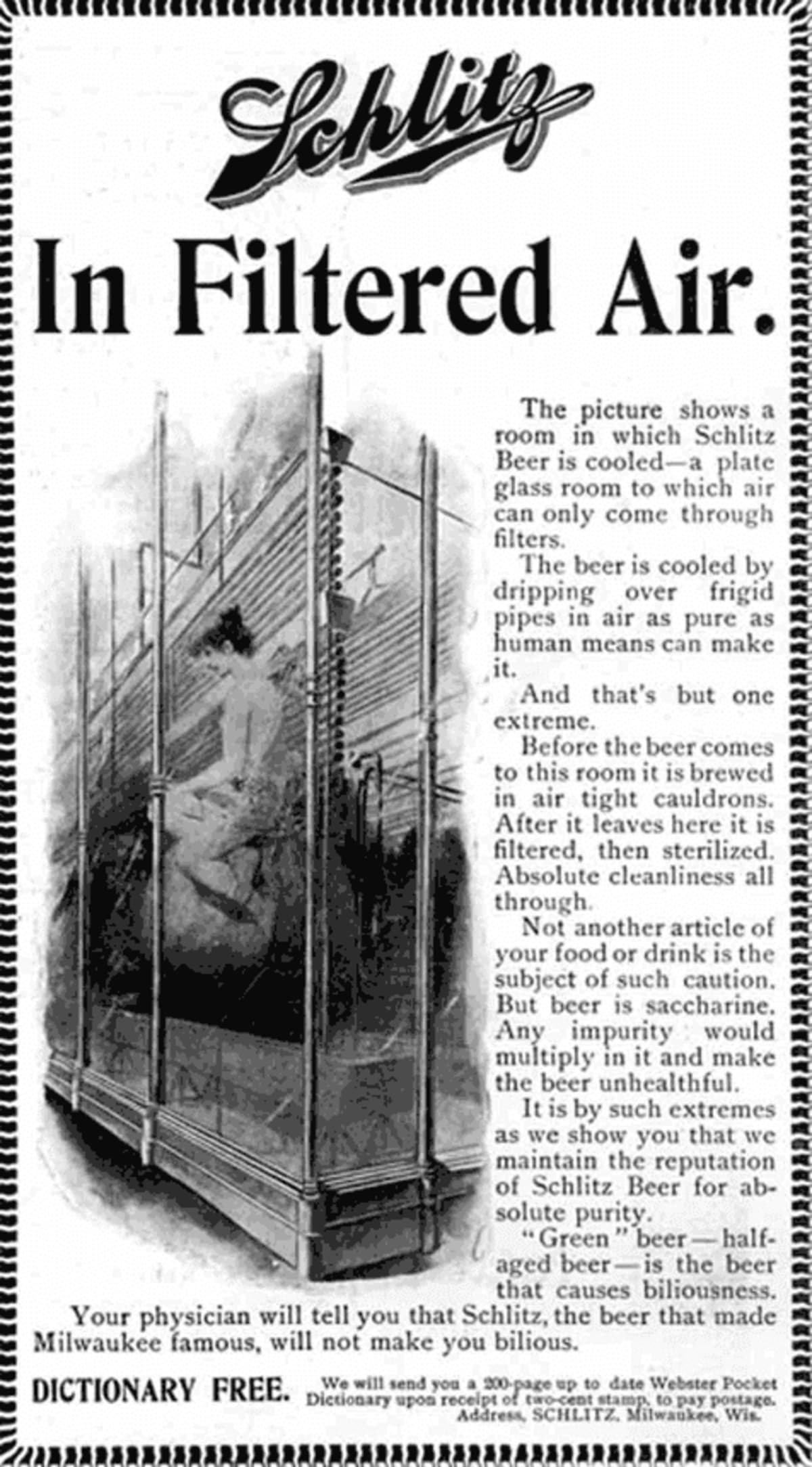
What processes in your business have you gotten accustomed to but might be news to your target audience? It’s worth getting into the details the way Hopkins did. For example, which micro-story is more compelling?
We use only the highest-quality ingredients.
Or:
The Suisse-Garantie certification guarantees that raw materials originate from Switzerland, are processed exclusively in Switzerland, and that products meet the ecological performance certificate ÖLN (organic farming standards). It prohibits genetically engineered feed and subjects the entire production chain to regular controls.
It’s true that the first version is vastly more succinct, but the goal should be to impress visitors and not to have them merely fly through the copy. If you want to see how Apple used the Schlitz Story approach to sell more laptops, you can read about it here.
2. Founders’ stories
When we engage with a new client at Conversion Rate Experts, an early goal is to gain a deep understanding of that client, their products and services, competitors, and more. In the course of that discovery, we ask about how the company began. Frequently, it’s an interesting story about seeing a need, finding a solution, and how the business took off from there.
It’s common for us to find that story buried on the site under “About us” or even entirely absent. That’s a missed opportunity.
As we discussed in our article about Patagonia, the founder’s story can be both interesting and a reason to buy. In that case, Yvon Chouinard could not find climbing clothes that withstood punishment, so he made them himself.
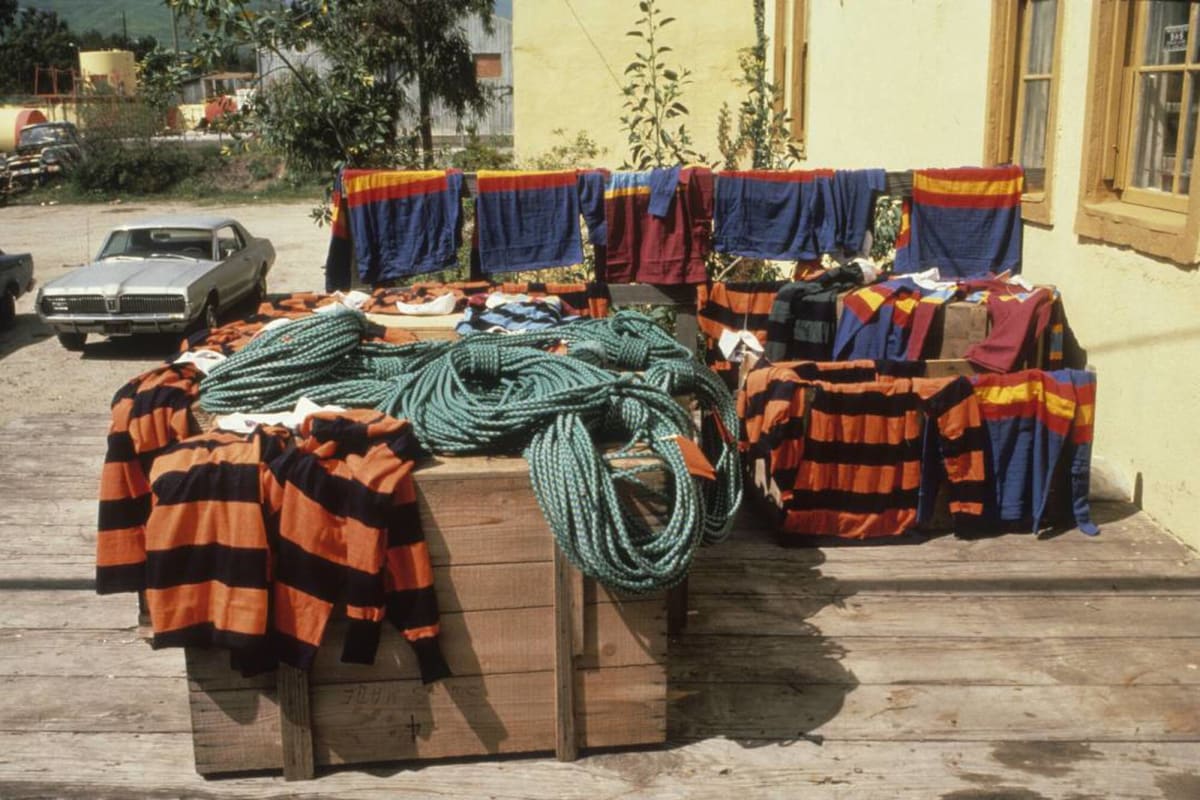
What frustrations or deficiencies were at the root of your company’s founding? Some of the best founder stories occur when someone solves a problem for themselves, only to find the word spreading. Founders may think their story is not that interesting, or they may simply be tired of telling it.
Many copywriters know a relevant principle whose shorthand goes by “The Moving Parade”:
Let’s say you play the trumpet in a band, and you’ll be marching for two miles through the streets. You may be utterly sick of playing the same songs dozens of times, but for the people at the one-mile marker of your route, it’s new. They haven’t heard you play.
Your prospective customers are on your parade route—serenade them.
3. “How it works” stories
Bill Gates is a voracious learner, and one of his favorite sources is The Teaching Company (now called The Great Courses). Speaking of founders’ stories, this company began when a student at Harvard Law School was impressed by a ten-hour video course he found helpful in order to prepare for an exam. He liked the format so much that he began a quest to record some of the best lecturers in universities across the U.S. The company now has over 800 courses.
Although what you see below is an infographic, it’s a type of story about how a course gets created:
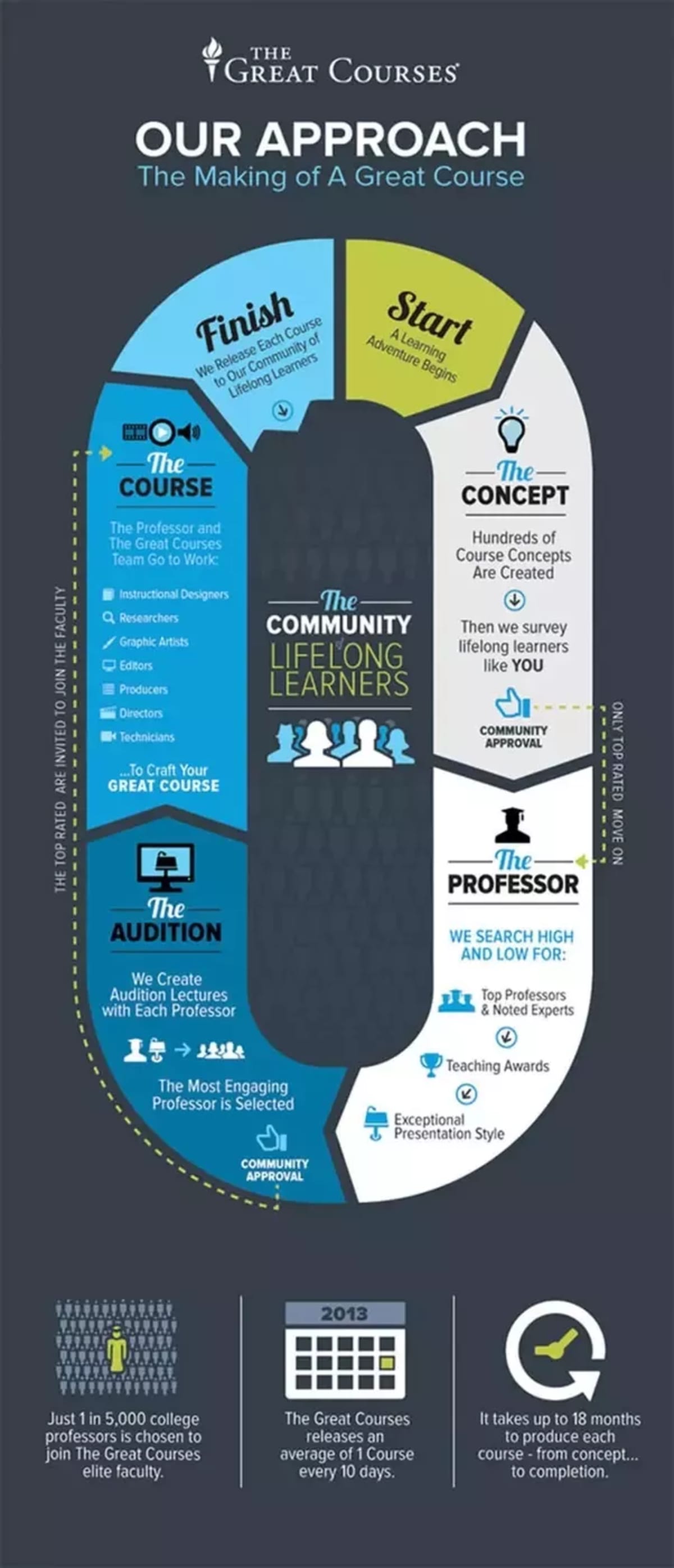
This type of story is a cousin to the “impressive detail” version, but it’s more focused on processes.
What mechanisms do you employ to create and manage your product? If you’re a SaaS company and your quality-control process is as detailed as the next SaaS provider, be the first to talk it up. Think about how you might describe the care you take and how the process has evolved over time. Go for details and texture rather than bland generalities.
4. Values stories
Coffee used to be a commodity that came in two varieties: “regular” and “decaf.” Not that long ago, a few coffee retailers realized that they could take the appreciation of coffee to a whole new level by discussing where the beans came from, how they were roasted, and the care that went into brewing. Here is an excellent example of elevating coffee through the people that contribute to the experience:
Notice how much work this video does in under three minutes:
- You hear the passion in the voices of people all across the company, from someone in accounting, to the roaster, a barista, and others;
- There is no boasting or selling—just people talking in the way they might speak to a friend about their job;
- You’re left with a feeling that these people care about what they do.
We’re not being sold, and that helps to make us want to buy. The video conveys a tone or atmosphere that’s hard to put into words.
(If the Schlitz story were published today, it would not be surprising if a video version worked even better than the print one did.)
What values are at the foundation of your business? If you don’t cut corners even when no one is looking, tell us about it.
Consider the essence of your stories
We can recommend a brilliant book—The Micro-Script Rules. The thesis of the book: It’s not what you tell people that counts, and it’s not what people hear. It’s what people tell others about you.
(That’s why one of our most powerful selling tools is our extensive testimonials page, which focuses on what others say about Conversion Rate Experts.)
Start with the end in mind: Think about what you want your customers to say to friends about you. Then, think about the stories you might tell to reinforce that word-of-mouth marketing.
Smart copywriters and companies become collectors of stories that demonstrate and persuade without being salesy. In a world awash with vague, impersonal statements, great stories can help you stand out as the full-color, high-definition choice.
How much did you like this article?
What’s your goal today?
1. Hire us to grow your company
We’ve generated hundreds of millions for our clients, using our unique CRE Methodology™. To discover how we can help grow your business:
- Read our case studies, client success stories, and video testimonials.
- Learn about us, and our unique values, beliefs and quirks.
- Visit our “Services” page to see the process by which we assess whether we’re a good fit for each other.
- Schedule your FREE website strategy session with one of our renowned experts.
Schedule your FREE strategy session
2. Learn how to do conversion
Download a free copy of our Amazon #1 best-selling book, Making Websites Win, recommended by Google, Facebook, Microsoft, Moz, Econsultancy, and many more industry leaders. You’ll also be subscribed to our email newsletter and notified whenever we publish new articles or have something interesting to share.
Browse hundreds of articles, containing an amazing number of useful tools and techniques. Many readers tell us they have doubled their sales by following the advice in these articles.
Download a free copy of our best-selling book
3. Join our team
If you want to join our team—or discover why our team members love working with us—then see our “Careers” page.
4. Contact us
We help businesses worldwide, so get in touch!
© 2025 Conversion Rate Experts Limited. All rights reserved.




